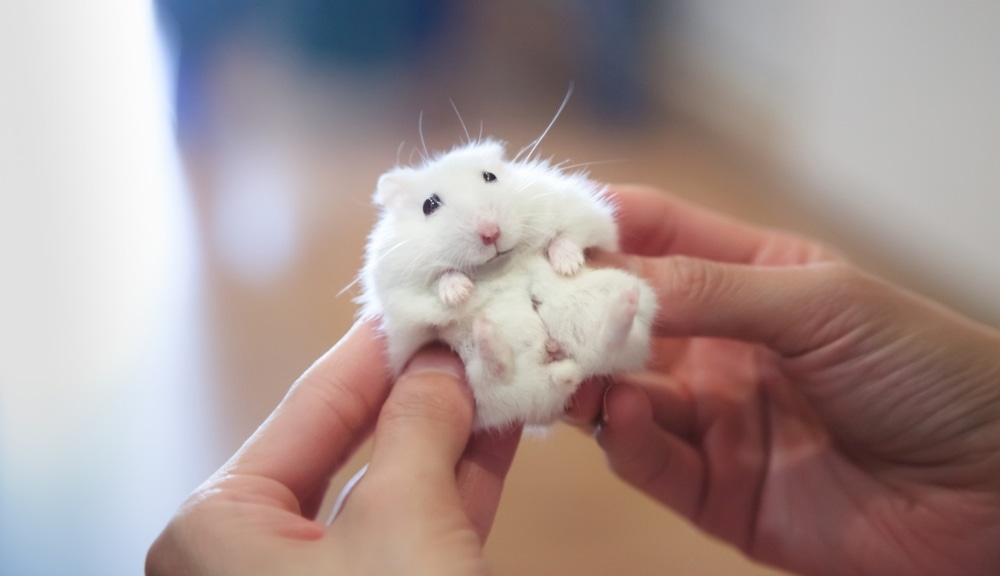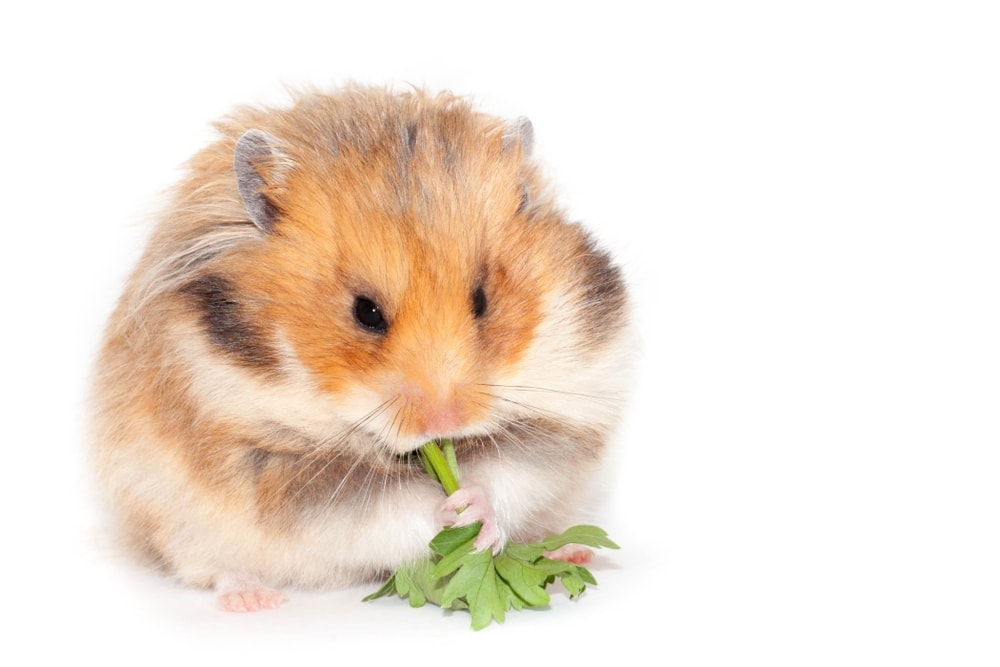If you are planning on getting a hamster, you should learn at least a little bit about its life cycle.
This information will let you know what to expect if you have a pregnant female.
There are certain defining characteristics of a hamster at each stage in their life cycle that you need to be aware of.
1. Newborn Hamsters
Baby hamsters cannot hear or see anything when they are first born. In fact, these animals don’t even have fur when they come out of their mother. It takes about five days to a week for you to start seeing fur appear on their body. You should notice their eyes start to open once they hit about two weeks of age.
Keep in mind that Syrian hamsters should be kept separate from each other, as they are known for fighting. This fighting can become quite serious and lead to severe injuries to one or both hamsters.
You should be able to keep dwarf hamsters together without any issues. Just make sure that you keep a close eye on them, because fighting is still a possibility.
2. Adolescence
A hamster is said to be in the adolescent stage of its life cycle from the time they are four weeks old. At this point you will need to remove the hamsters from their mother’s care. This is just a part of the normal development of these animals, and it is necessary.
Hamsters become sexually mature at four to six weeks old. You will, however, want to avoid breeding these animals until they are 10 weeks old. This will greatly reduce the chances of birth defects in the babies, along with some other issues.
3. Adult
A hamster becomes an adult when they are 4 to 6 months old. A female hamster can get pregnant as soon as 24 hours after they give birth. Keep in mind that these animals are usually completely sterile by the time they are a year old. If you are planning on breeding these rodents, it is important to keep this in mind.

4. The Senior Stage
Once your hamster has reached 1.5 years old, they are considered to be a senior. This is the point of a hamster’s life at which it is most prone to health issues. It is therefore important that you keep a close eye on them and look for signs of illness.
Some of the most common signs of illness in hamsters include lethargic behavior, changes in eating or drinking habits, diarrhea, huddling in a corner, and hair loss. Wheezing or labored breathing is also a sign that there is something seriously wrong with your pet.
Most hamsters live up to two years, while others can live up to four years. It depends on the species and how well you care for them. The more diligent you are about looking for signs of illness in your hamster, the longer they are likely to live.
5. Litters
A hamster can have up to 20 pups at a time, depending on the species. Dwarf hamsters never birth more than 10 babies at once. It is important that you are prepared for a good number of pups if you have a pregnant female.
What Affects the Lifespan of Hamsters?
There are numerous factors that can have a huge influence on how long your hamster lives. You do have quite a bit of control over this, but only to a certain extent.
1. Diet
Your hamster’s diet is very important when it comes to how long it ends up living. You need to provide your rodent friends with a high-protein, low-fat diet. These animals can be given specially formulated pellets or a loose seed mix. Either way, you need to make sure that you get the right food for them.

2. Exercise
Hamsters need exercise just like any other animal. While you may not be able to take your hamster for a walk, you can provide them with exercise in a number of ways. You should put an exercise wheel in their cage for starters.
You can also help your hamster to get the exercise it needs on a daily basis by putting them in an exercise ball. These animals love to race around the house in these balls, and it is good for their overall health.
3. Habitat
If you want to extend your hamster’s life as much as possible, you’ll want to provide them with adequate housing. A hamster that isn’t given enough space in their environment is likely to die young.
Make sure that you choose a decently large habitat or cage for your hamster so they don’t become stressed out too easily. Stress can take a serious toll on this animal’s mental and physical health over time.
4. Checkups
You need to make a point of taking your hamster to the vet for regular checkups. This will go a long way towards keeping your pet healthy. A veterinarian will thoroughly examine your hamster to check for any signs of illness. If there is something wrong with them, you’ll want to know about it sooner rather than later.
Conclusion
- Pregnant hamsters can birth up to 20 pups at a time, but it depends on the species.
- Newborn hamsters cannot hear or see at all, and they don’t even open their eyes for the first two weeks.
- Hamsters enter the adolescent phase of their lifecycle once they hit four weeks old.
- A hamster usually becomes sexually mature at around four to six weeks of age.
- You should avoid trying to breed hamsters that are younger than ten weeks old.
- Hamsters are officially considered an adult by the time they are four to six months old.
- Senior hamsters are 1.5 years of age or older.
- It is particularly important to keep a close eye on your hamster once it is a senior, as they are more prone to illness and health problems.
- You can help to extend your hamster’s life by providing them with a healthy diet, regular exercise and an adequately sized habitat.





